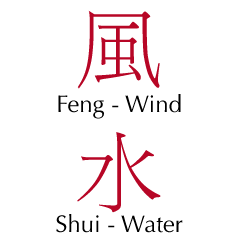WHAT IS FENG SHUI?

Feng Shui Symbols
My first formal introduction to Feng Shui was in 1985-1986 when I attended an Interior Design Conference. It was not a pleasant introduction. I tell that story in other formats. No one I knew had ever heard about Feng Shui. There were no books on it. And we didn’t have the internet back then either in order to ‘Google’ it to find out what it is or means.
The actual translation of Feng Shui is: Feng = Wind and Shui = Water. They are the two life force energies that have created the earth and are needed for us to live.
Originating in different forms throughout Asia, Feng Shui is a 4000-year-old philosophy/science/art, which examines the relationship between people and their lives and their environment. There are about a dozen different schools with many variations.
This is my definition of FENG SHUI:
“Feng Shui respects the personality and individuality of the person who occupies the dwelling—be it a home or workspace—and shares an insight into the psychological impact the environment plays on one’s life. This predominately Asian philosophy can help the Western culture learn and experience new tools to help us cope with many of our daily challenges without jeopardizing our own heritage. When understood, this information can build strong bridges to link Western businesses with their Pacific Rim clientele and the expanding global community.”
SCHOOLS OF FENG SHUI
As I stated before, there are several different schools of Feng Shui. Some focus on the geographical location. There are a few that include religious teachings, but not all of them include religion. Hence, Feng Shui can be used without jeopardizing a person’s religious belief. Still others are more ‘common sense’ based.
Schools using geographical locations might focus on the correct direction for a building to face. For instance, there are many books that will tell you you need to have your home facing South. That will make you feel good if your home is facing south. But if it doesn’t face south, there is a tendency to blame the house for things not going your way in life. Or the school might state you need to have mountains on three sides of you and face water on the fourth. Again, that’s wonderful unless you are in the flat lands or desert. Sometimes this school is called Landform, Armchair, or Four Animal Feng Shui.

Ba-Gua half image
Other schools use a ‘Ba-Gua’ Map. The word “Ba” means eight and “Gua” means sides. This map is an eight-sided image that lists the areas of life as well as the five elements, colors, and body parts. This Ba-Gua Map is used as an overlay on the building to locate those areas of life. You can then use the elements, colors, and awareness of the body locations to trouble shoot health issues and to improve your life.
As a Feng Shui Master (I became a Master in 2002), I have been taught all the different schools. I use them all at different times. Sometimes it is easier, or more practical, to use one school over another.
In future articles I’ll share more about these aspects of this intricate art, science, and philosophy.
If you have a specific question, send it to me privately and I’ll respond here.






